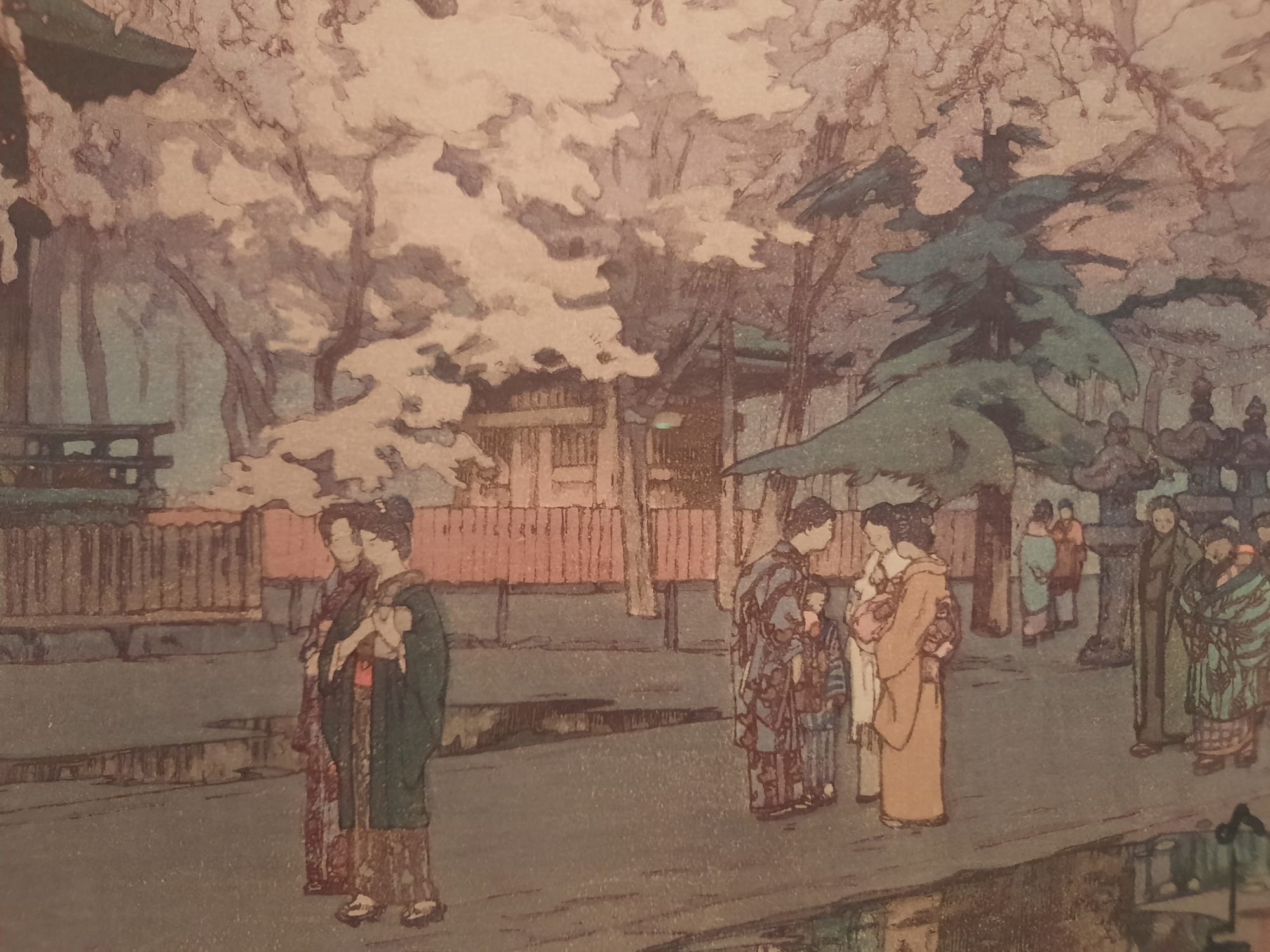Yoshida: Three Generations of Japanese Printmaking (LAST CHANCE TO SEE)
The Dulwich Picture Gallery‘s latest exhibition Yoshida: Three Generations of Japanese Printmaking showcases an artistic and technically interesting dynasty in its own floating world.
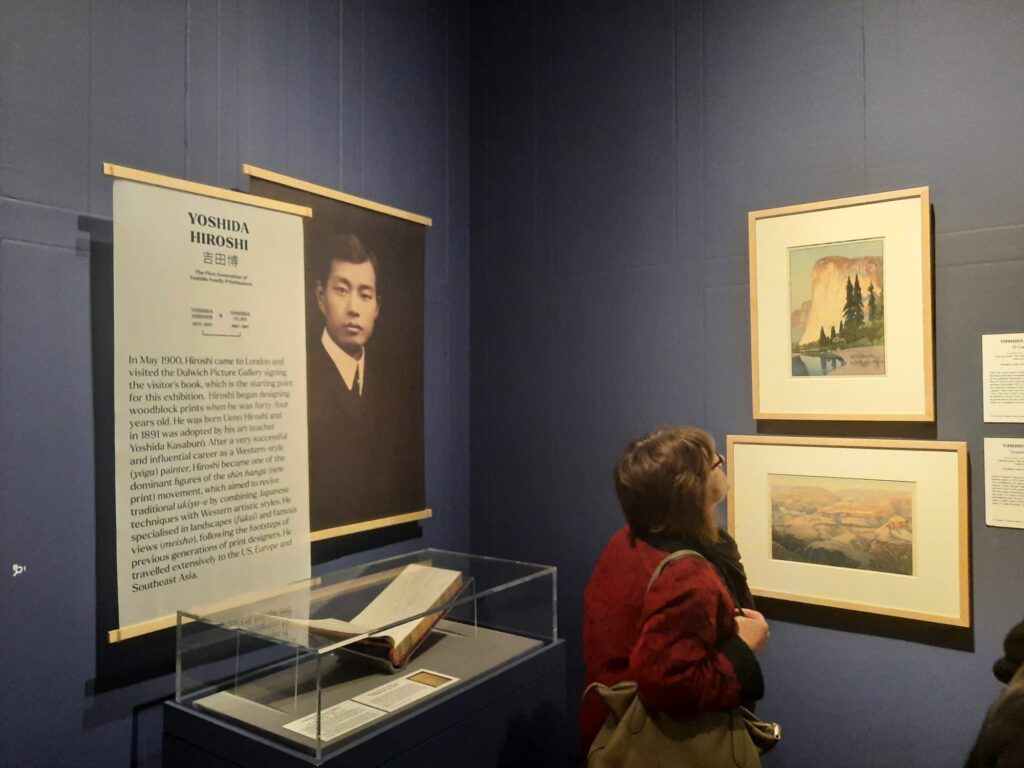
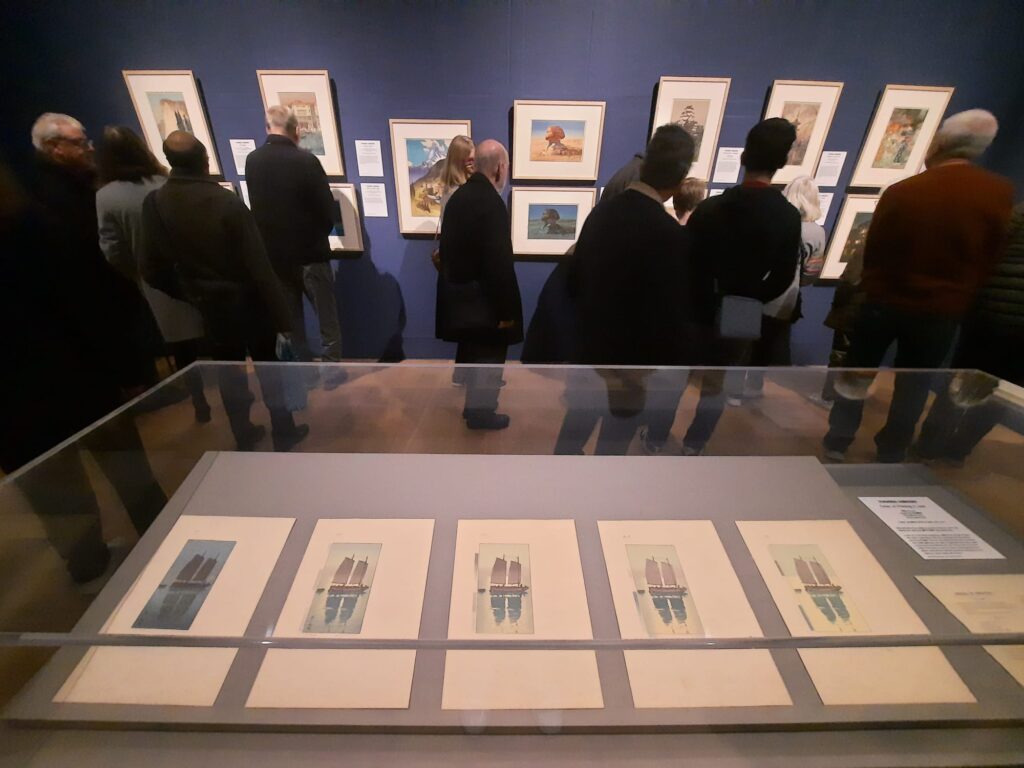
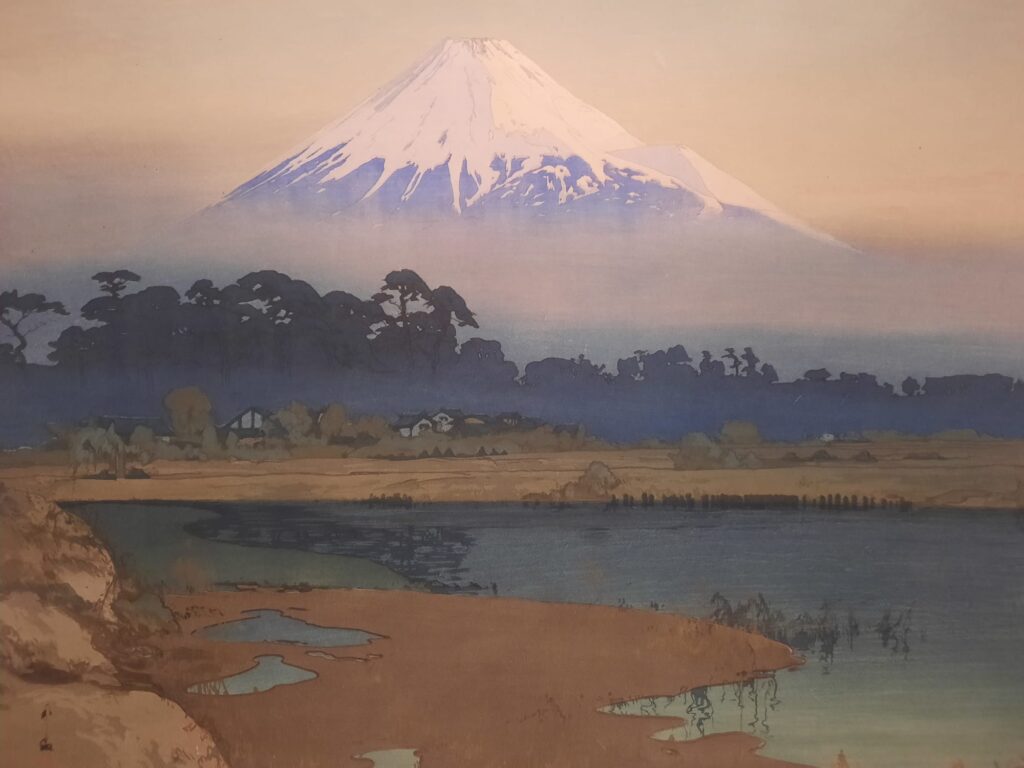
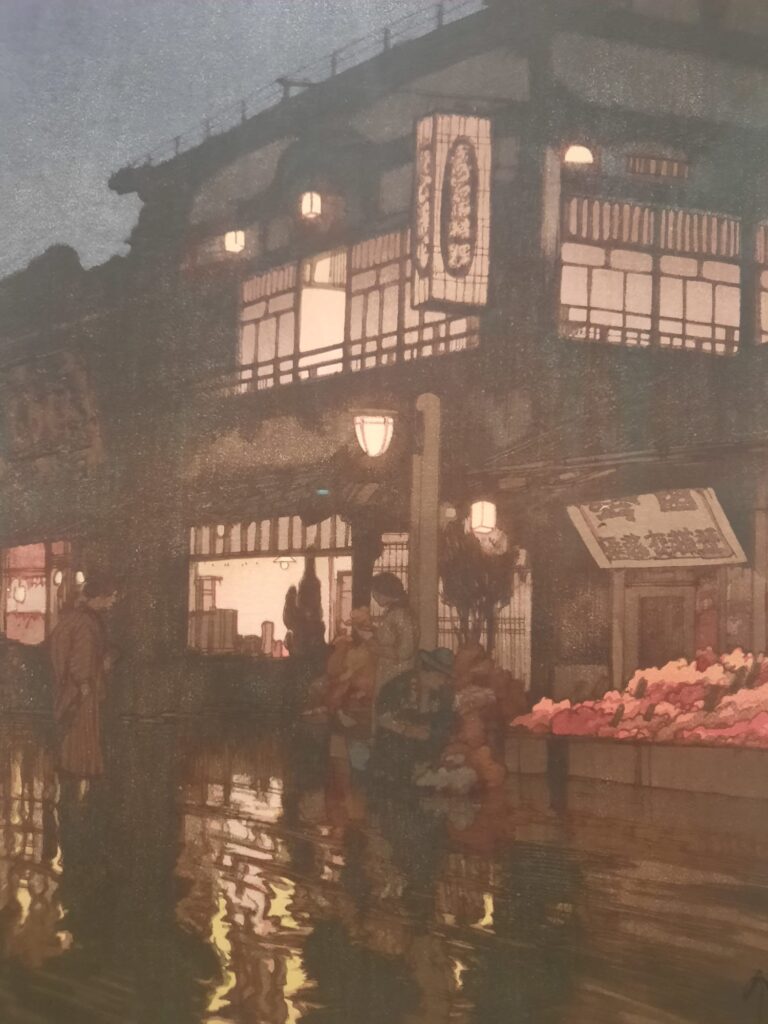
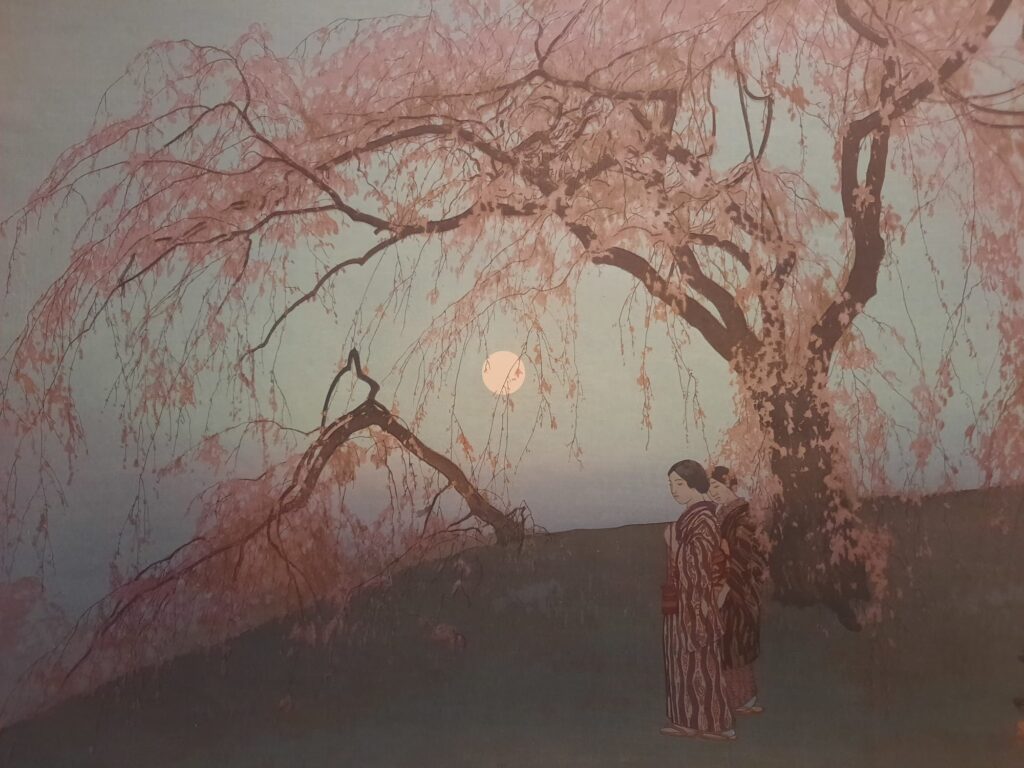
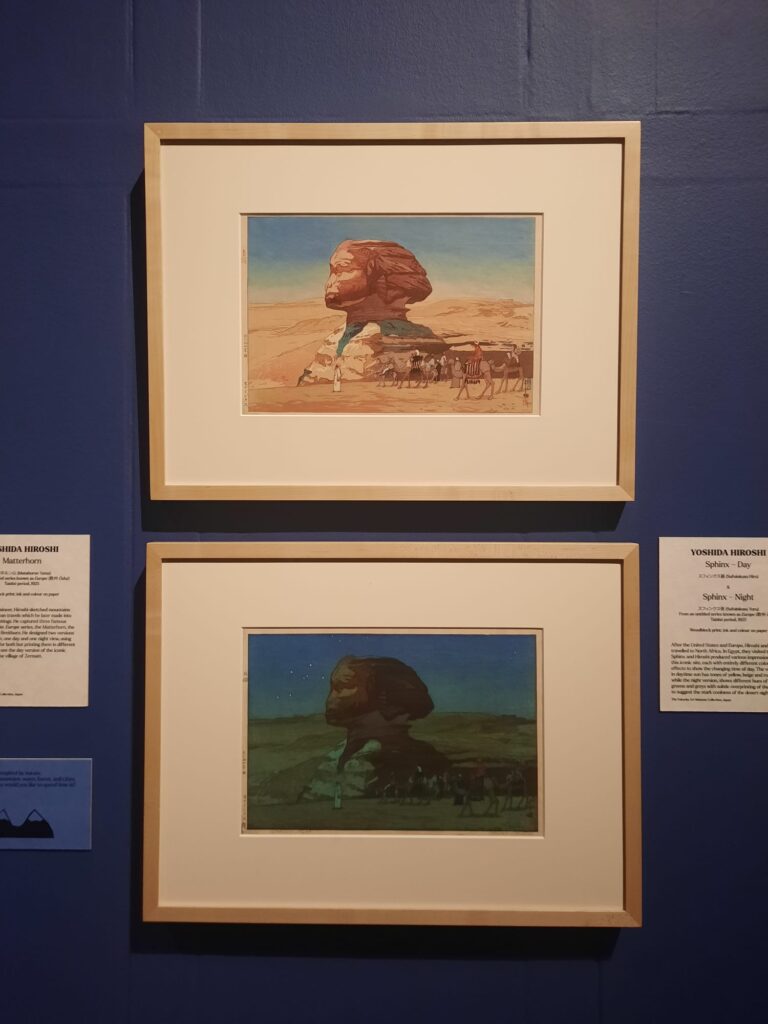
Introducing the Yoshida Family
It’s my own fault, really. I shouldn’t leave exhibitions to the last minute. So if my experience at the Dulwich Picture Gallery was a very crowded one, I only have myself to blame. And if this review inspires you to visit, do check in advance: timeslots may be sold out, especially as it’s now the final week.
But back to the point of this post, which is to tell you about Yoshida: Three Generations of Japanese Printmaking. An interesting lens through which to view developments in Japanese art and in printmaking from the 20th to 21st centuries. Let’s start with a pertinent question (or two), though. Who are the Yoshida family, and why stage this exhibition here in Dulwich?
First of all, there is a direct connection between the Yoshidas and the Dulwich Picture Gallery. Yoshida Hiroshi (names are given in Japanese order with family name first), the first family member introduced to us, visited the gallery in May 1900. The visitor book from that year lies open with his signature and that of another Japanese artist, Nakagawa Hachiro, with whom he had exhibited in Boston that same year. At the time, Hiroshi was 23 years old, and given the Boston exhibition was not his first, or even his first in the United States, we can assume he was already making his way in the art world.
Interestingly, Yoshida Hiroshi would not even have been a Yoshida if not for art. He was born in 1876 as Ueno Hiroshi, in Kurume in Fukuoka Prefecture. His art teacher – one Yoshida Kasaburō – discovered his talent, and adopted him at 15. The young Hiroshi studied Western-style painting and became a member of Japan’s first Western-style art organisation, Meiji Bijutsukai.
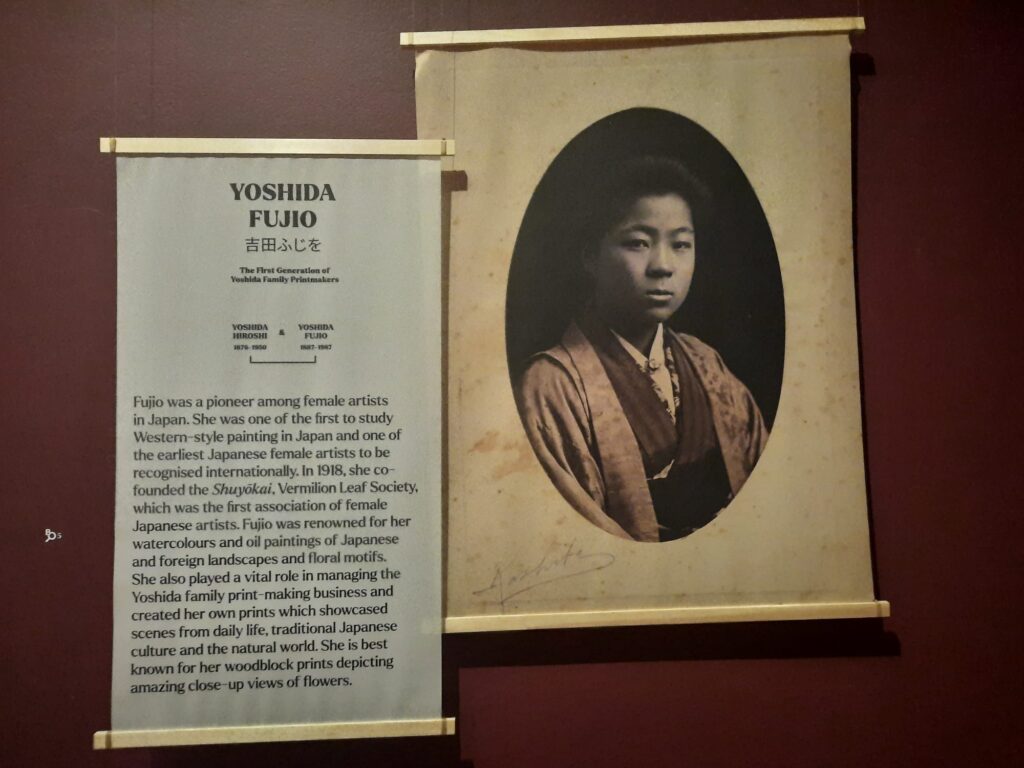
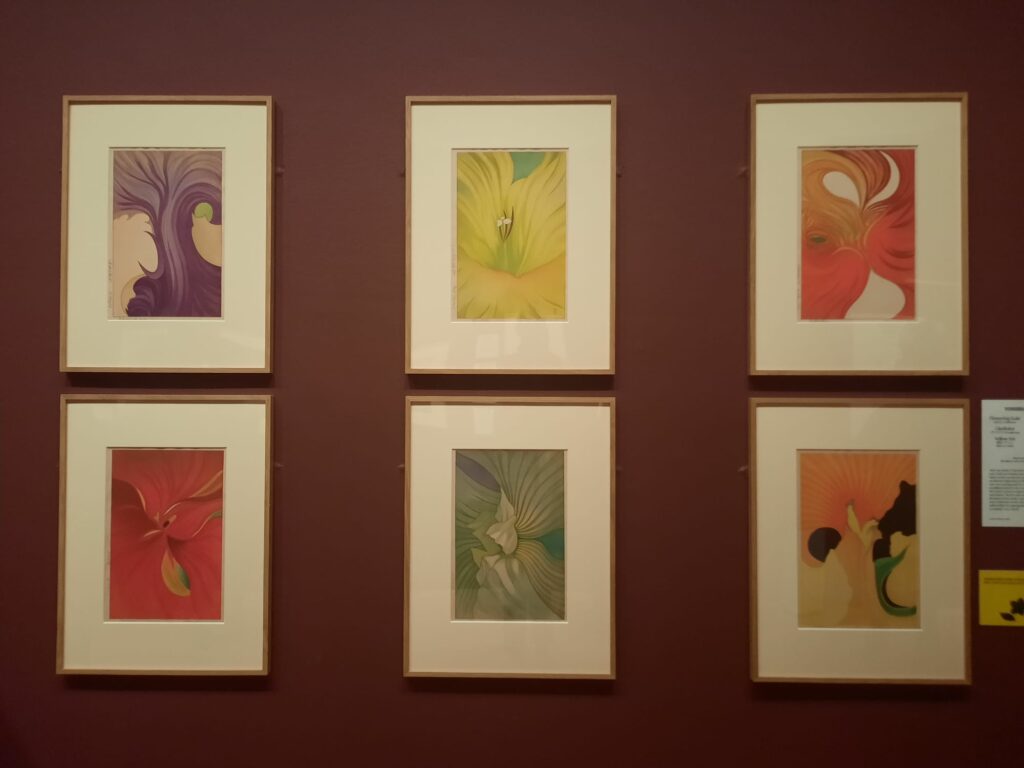
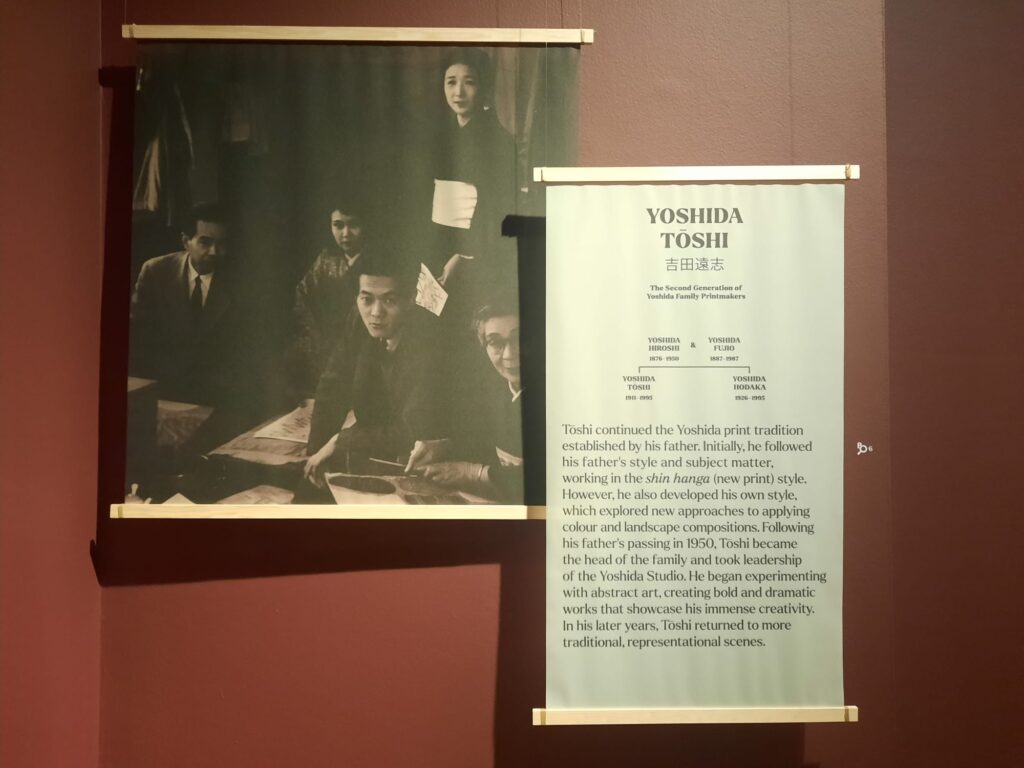
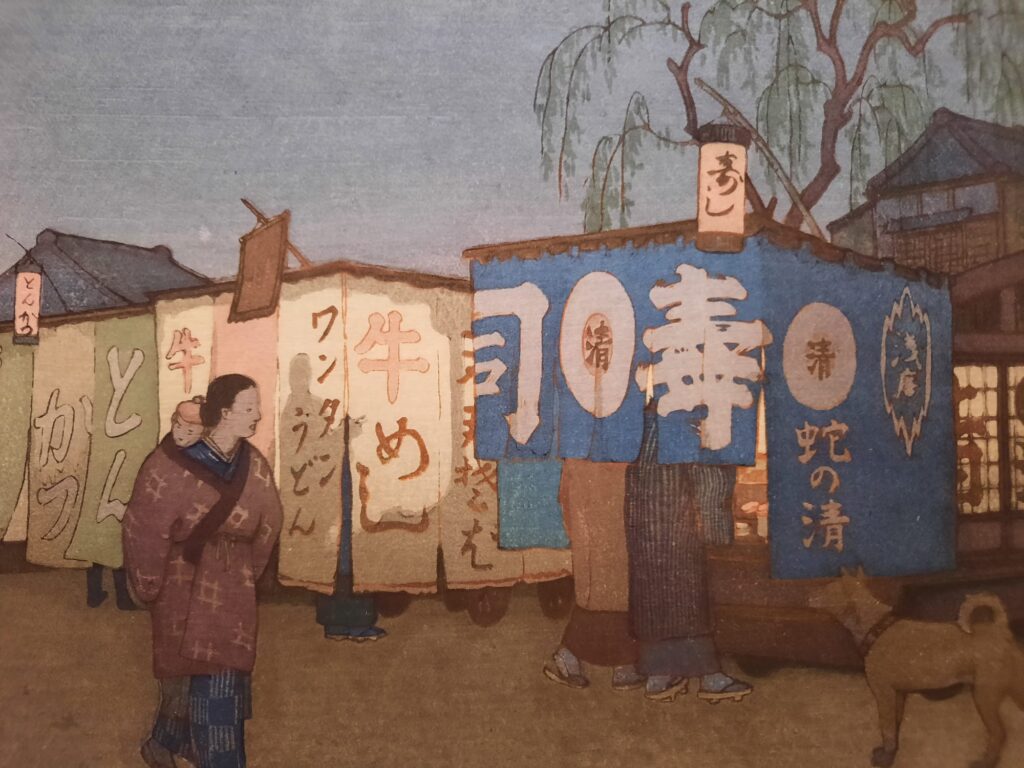
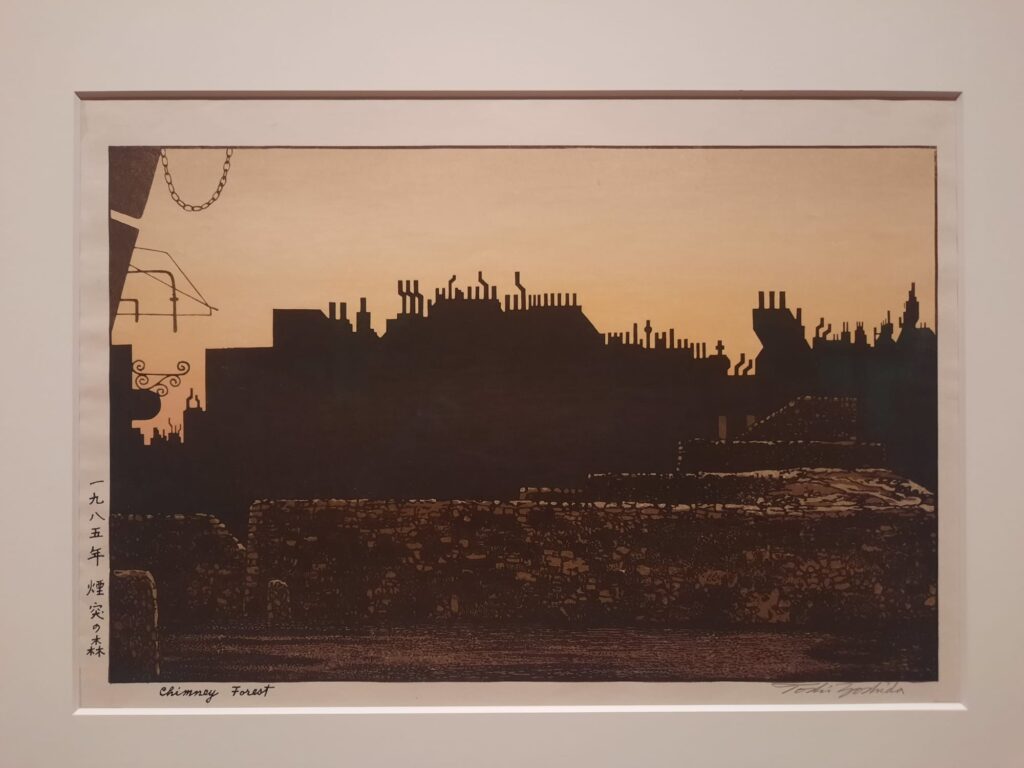
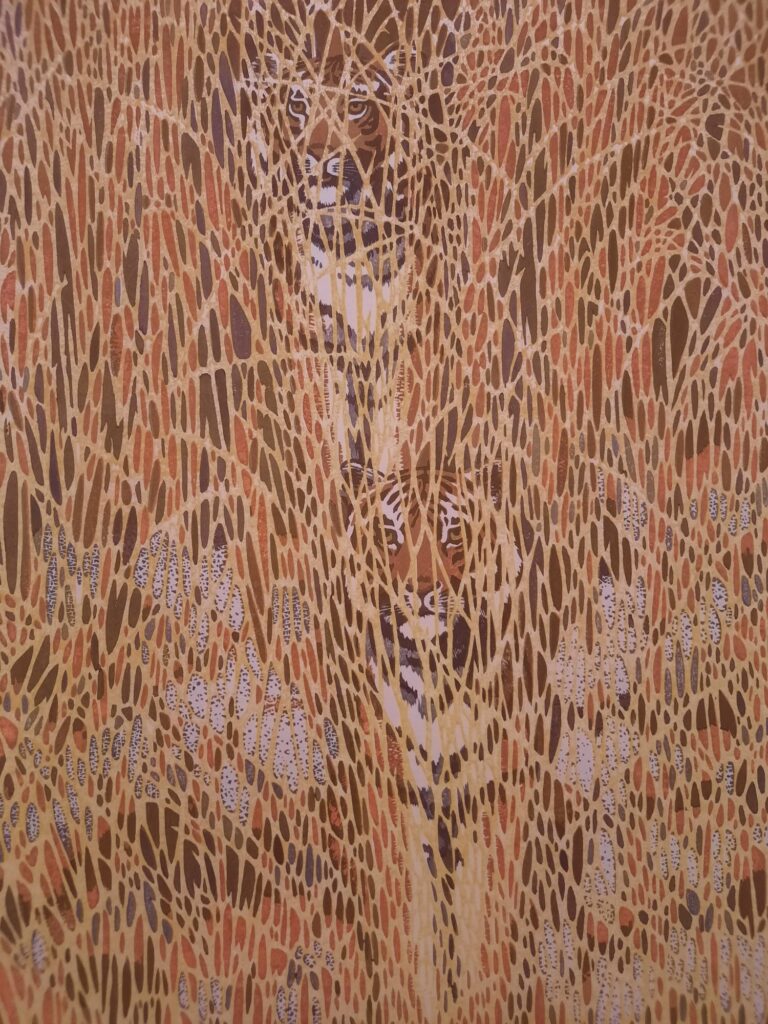
Founding an Art Dynasty
But we are here to talk about printmaking, not Western painting, aren’t we? Yes, we’re getting to that. As we’ve established Hiroshi became a successful artist, exhibiting internationally. It wasn’t until 1920, in fact, that he exhibited his first woodblock print. An earthquake and fire in 1923 ended his collaboration with the Wanatabe Print Workshop, and prompted a trip to the United States where he observed the high esteem in which Japanese prints were held, and determined to combine his Western-influenced art style with traditional techniques.
Establishing his own studio in 1925, Hiroshi more than fulfilled this ambition. His work is particularly notable for the texture and shading he achieved by greatly increasing the number of layers of colour. A good print might normally have ten impressions, whereas Hiroshi’s might have 30, or even 100. The prints on display in Dulwich show off this technical prowess. They also demonstrate how Hiroshi continued to derive inspiration from his travels – the introductory room includes scenes from Japan, the US, Egypt, and India.
But one man does not a dynasty make. Luckily for Hiroshi in this regard, he met a lady who would help him to found one. There’s shamefully little information (in English) online about Yoshida Fujio, but I did find out that at only twelve she became the only female admitted to the Fudosha private painting school in Tokyo. And I know that because funnily enough there was also a display this year at the Rijksmuseum of three generations of the female line of Yoshidas. They’re having a moment.
Anyway, Fujio was an artist and print maker, managed the family business, and had sons Tōshi and Hodaka. Both sons continued two family traditions by becoming artists and also marrying artists. Tōshi’s wife Kiso was only an occasional printmaker so isn’t included here, but Hodaka’s wife Chizuko is. Their daughter Ayomi brings the Yoshida into the present day and also into contemporary printmaking, with a site-specific installation combining traditional and unexpected techniques.
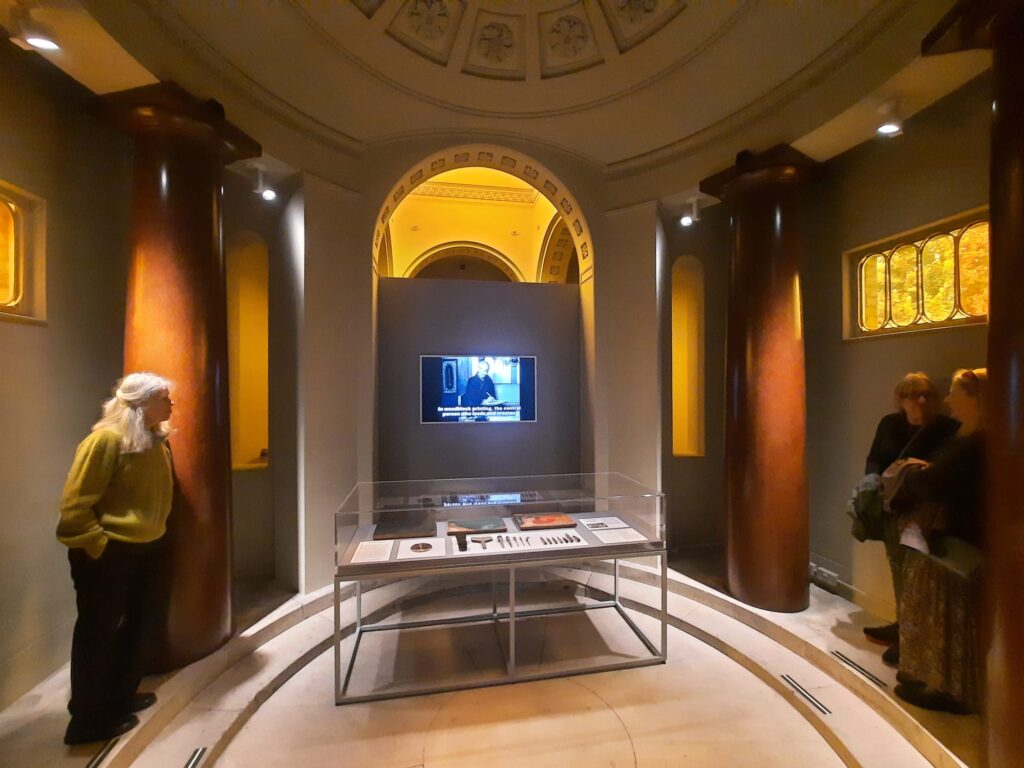
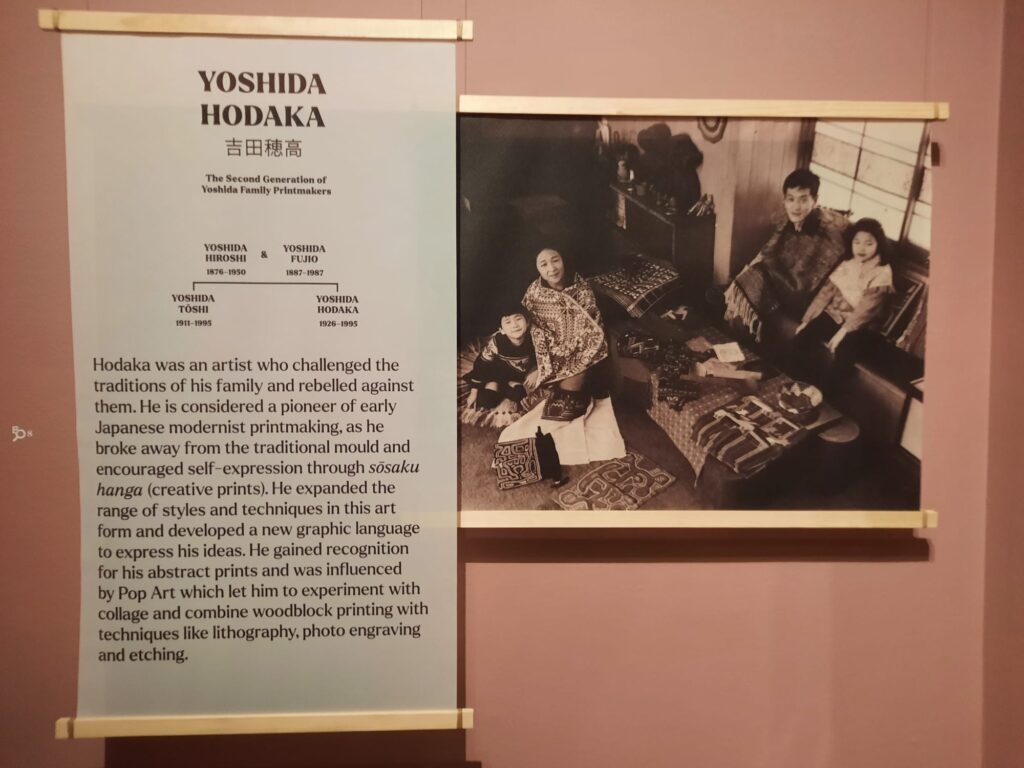
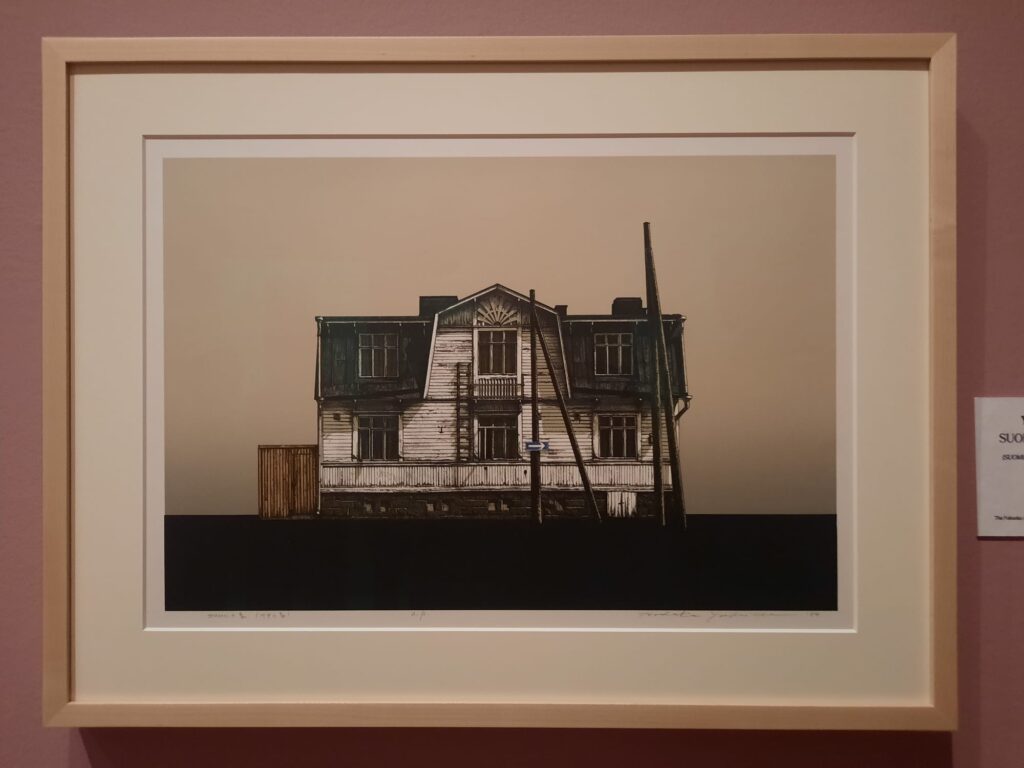
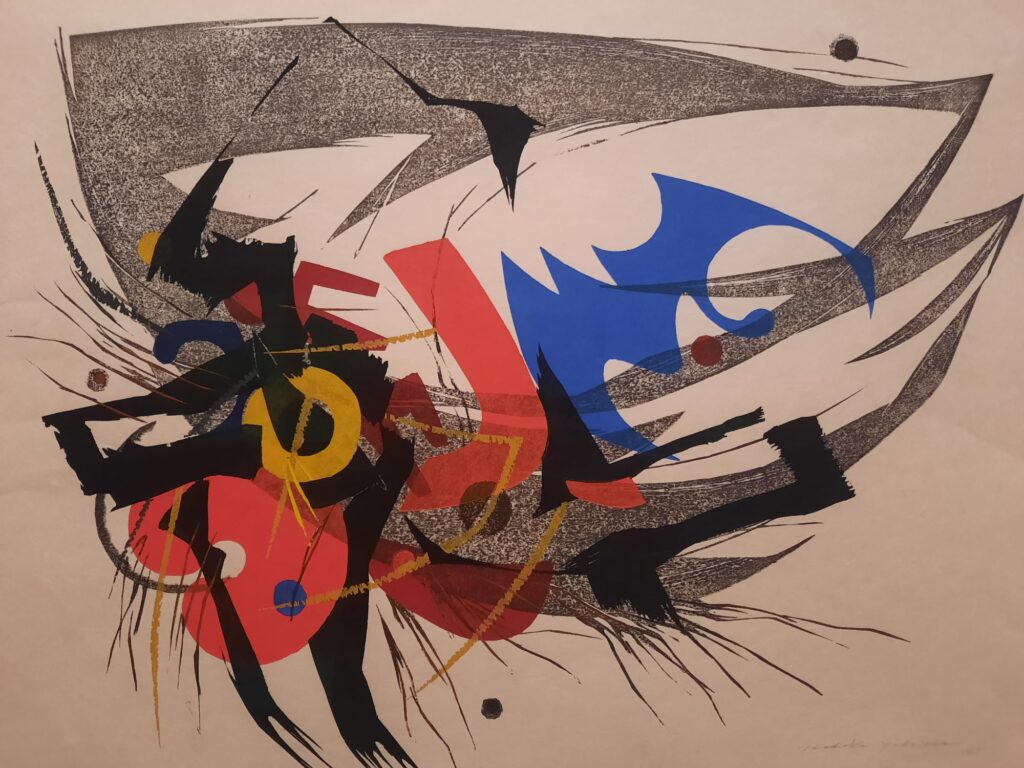
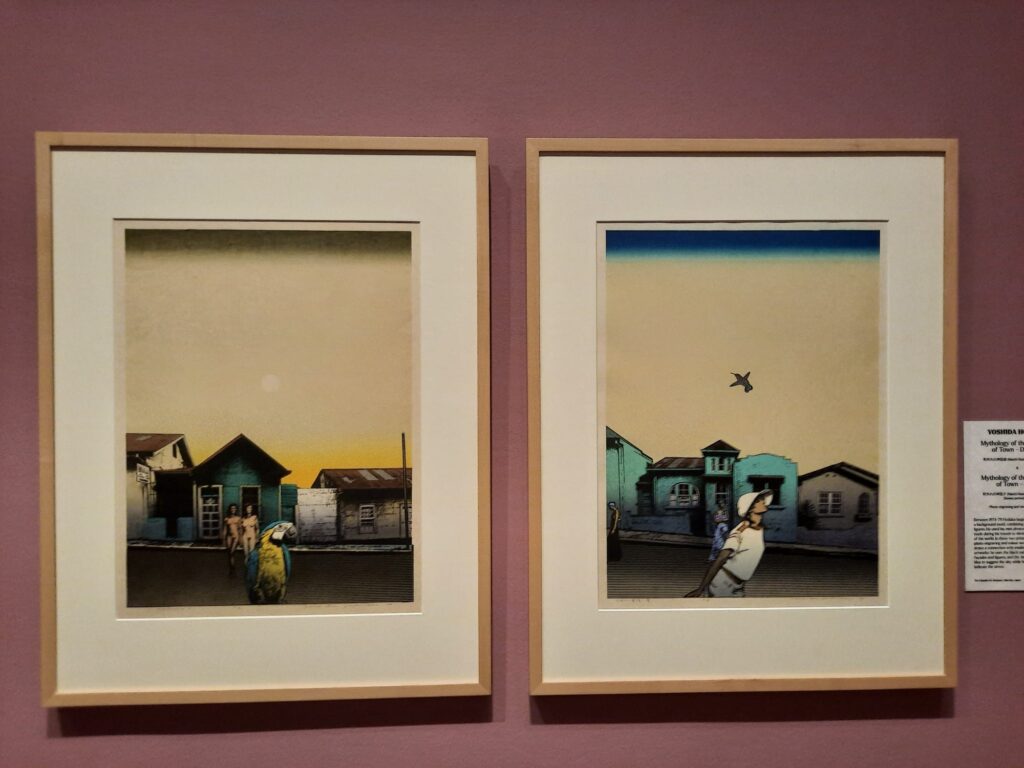
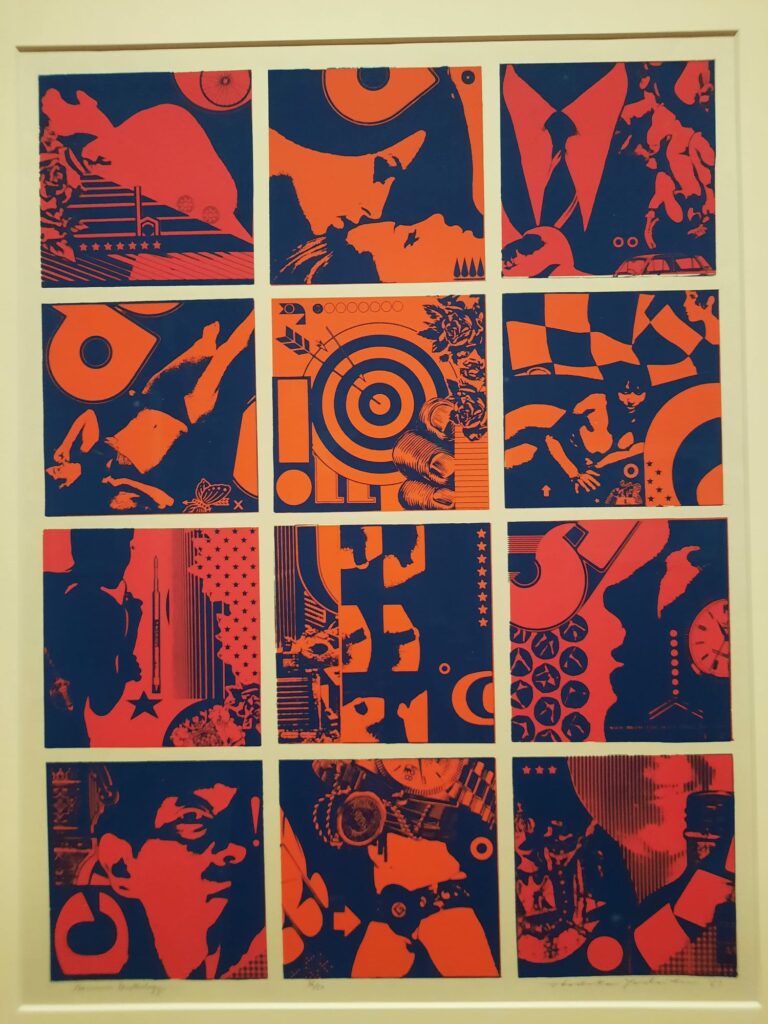
Exhibiting an Art Dynasty
The flow of Yoshida: Three Generations of Japanese Printmaking follows this family line just as I’ve set it out. Each family member gets an introductory text (included in the images here so you can follow whose prints are whose). It’s helpful to have these clear delineations as the members of the Yoshida family have experimented so much artistically that it’s not always easy otherwise to spot a distinctive style.
From the outset, with Hiroshi’s incredible layering of colour, the Yoshida family have been innovators. Not many of Fujio’s works are on display, but the ones that are are wonderfully close-up, semi-abstracted views of flowers. As we move to the second generation, we see the Yoshidas combining traditional printmaking with Abstract Expressionism, Pop Art, and more abstraction. Both Tōshi and Hodaka travelled like their father, drawing inspiration from the art, people and scenery they saw. There’s such a variety of styles in their work that change is the only constant. We see fairly traditional Japanese scenes, realistic work, abstract shapes, bursts of colour. There’s a balancing act in curating something like this.
And then we come to Chizuko and her daughter Ayomi to finish the exhibition. Chizuko’s work was again innovative and technically impressive. She was also inspired by travel and the natural world, threads which run through this exhibition. Chizuko experimented throughout her career with subject matter, style and also technique, incorporating embroidery and photographic images into her work. Ayomi (b. 1958), meanwhile, has taken the print beyond the confines of a sheet of paper. She started her career making more standard woodblock prints, but since the late 1990s has focused on installations. These installations deconstruct the woodblock print by filling spaces with woodchips, blocks and fragments of prints. Her site-specific installation at Dulwich features hundreds of delicate paper blossoms in large-scale scenes of trees.
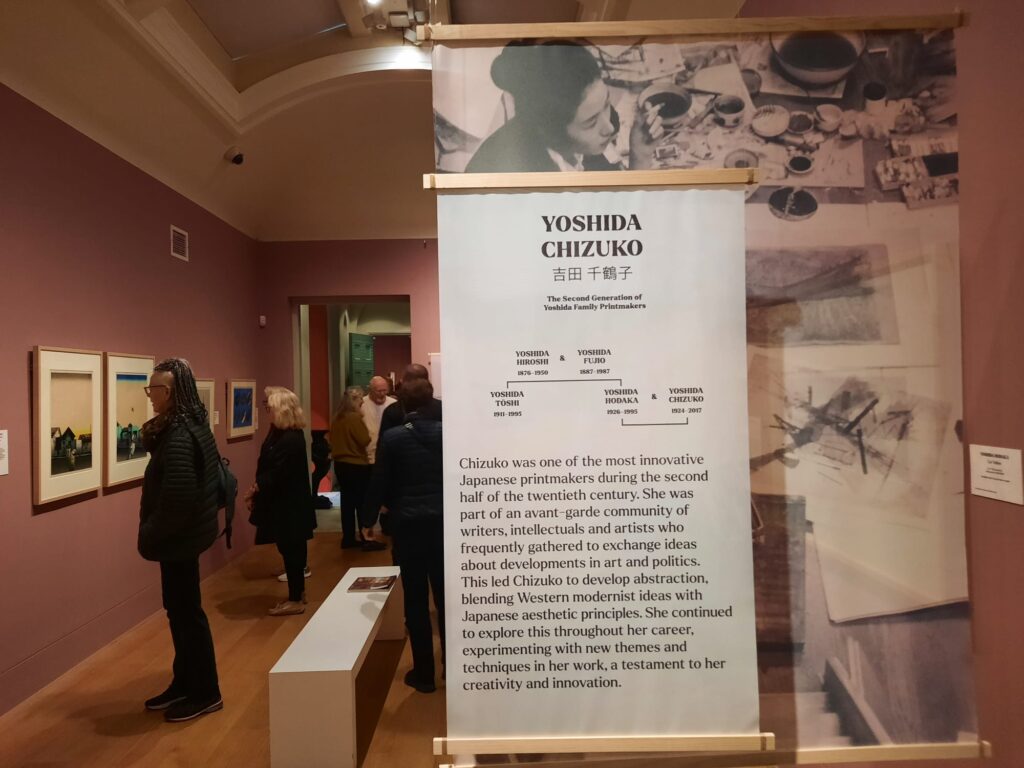
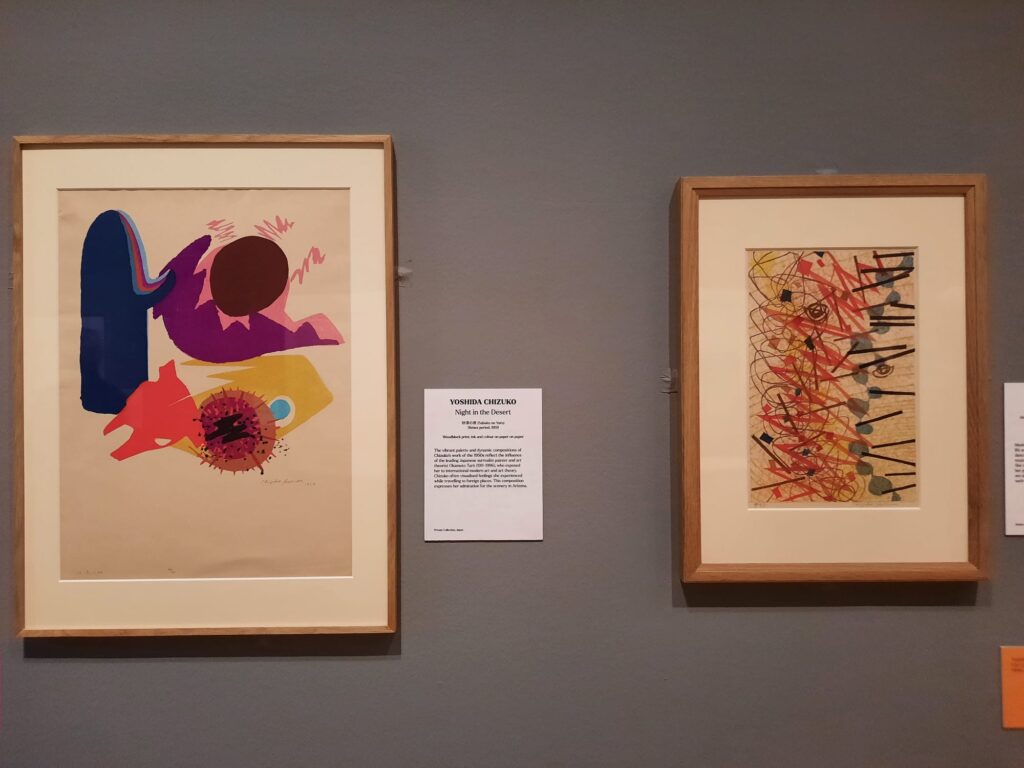
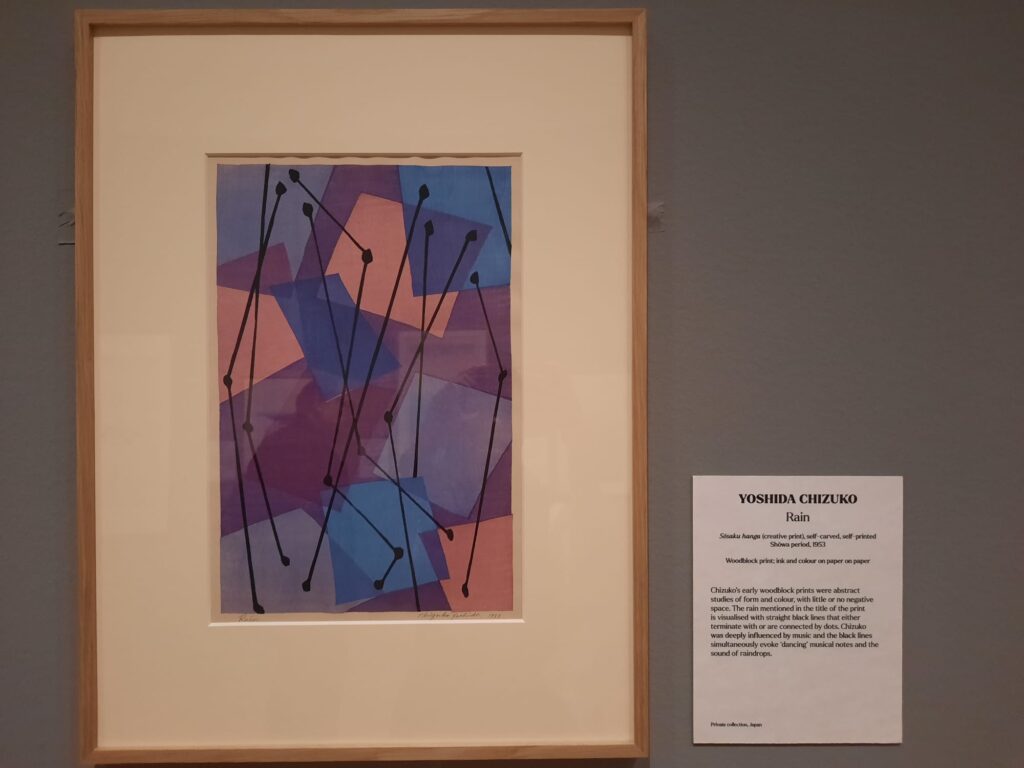
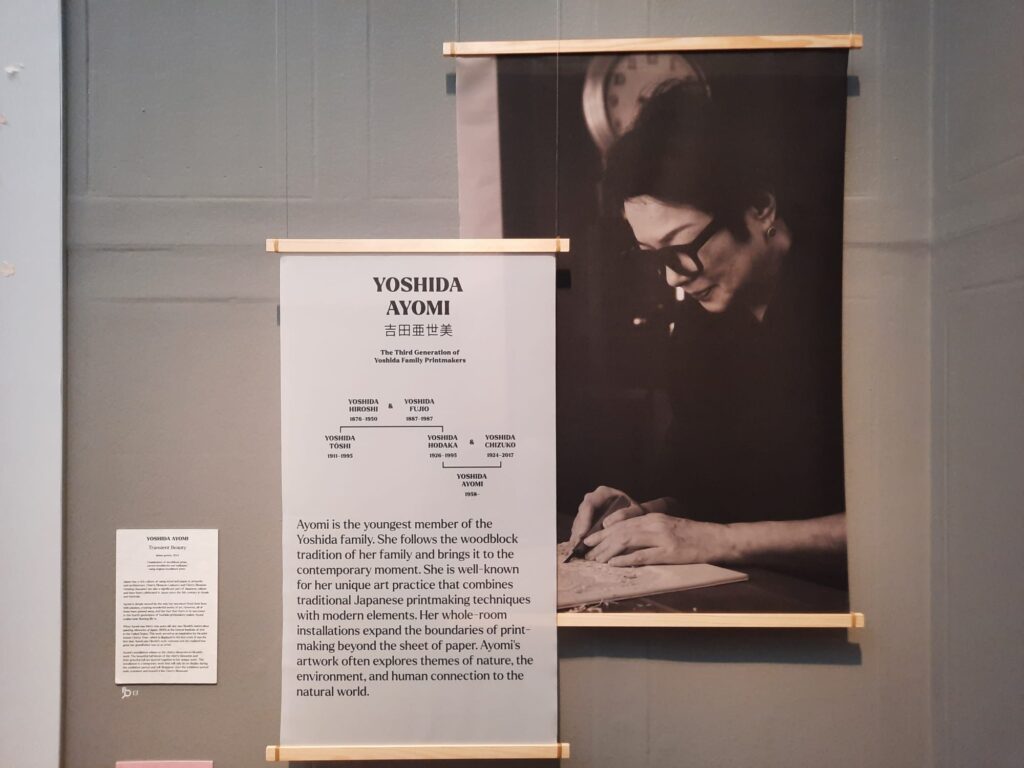
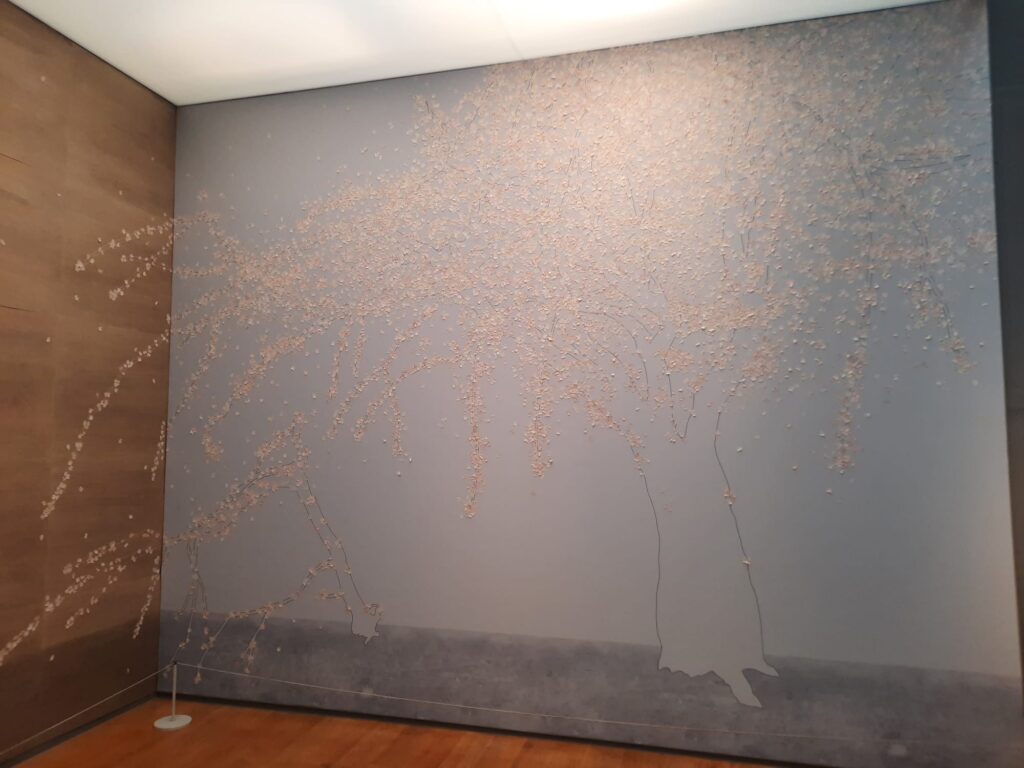
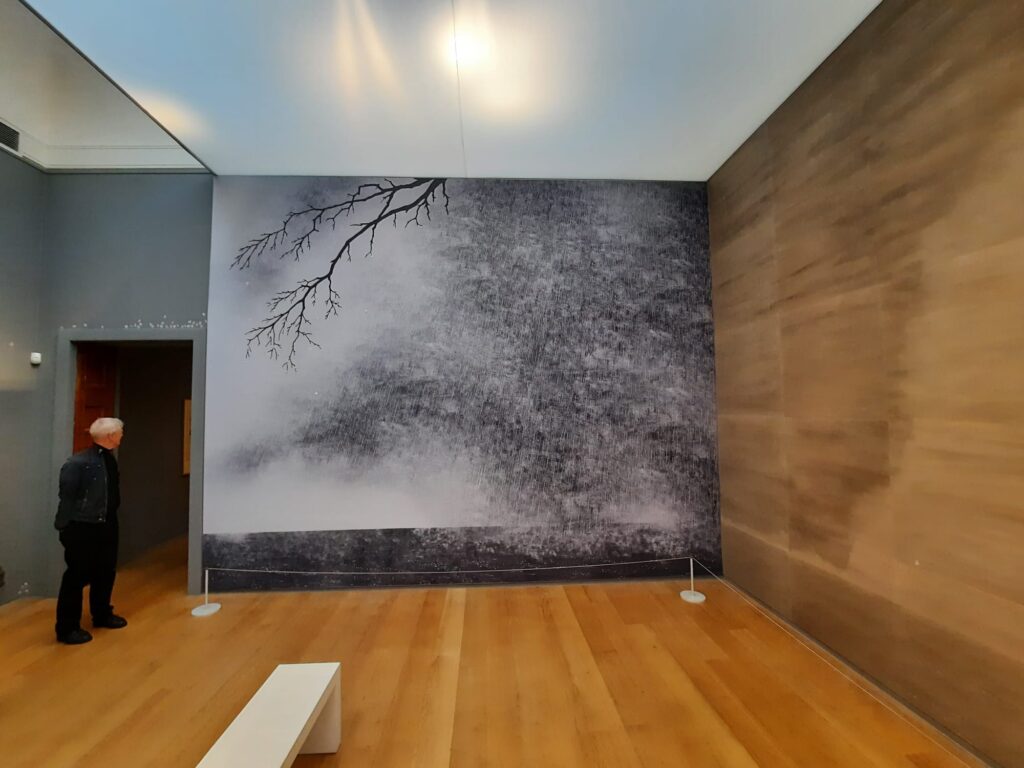
What’s Not Exhibited
As I said earlier, curating something like this is a balance. To truly do justice to each family member would take more space than is on offer at the Dulwich Picture Gallery. But to tell a family’s story you have to sacrifice a little of each member’s individual story. Each artist’s section is either a whirl of different styles (Tōshi, Hodaka, Chizuko), or just a glimpse (Fujio, Ayomi). Hiroshi, as the patriarch, gets a little more space.
The other sacrifice in this exhibition is context. Traditional Japanese woodblock prints include a genre called Ukiyo-e, or ‘Pictures of the Floating World’. They represent the hedonistic, detached-from-reality world of the Edo period. Yoshida: Three Generations of Japanese Printmaking feels a bit like its own floating world. There are mentions of foreign travels and art movements, but it’s very tightly contained to the family itself. The turbulent 20th century doesn’t really get a mention. I suspect there are a couple of drivers here. Firstly, working directly with the family has to set the tone to some degree. Secondly, I’ve had similar feedback on Dulwich Picture Gallery exhibitions before, so I think it’s also a matter of limited space and perhaps appetite for controversy. I wonder if the Rijksmuseum exhibition was any different?
Overall, however, I enjoyed this exhibition as a capsule introduction to a family and their work, and also to Japanese printmaking beyond the more familiar Ukiyo-e. Most of the works have travelled from the Fukuoka Museum of Art, so it’s a treat to see them in my own backyard. And it’s interesting to see how artists in close orbit can share such similar interests (printmaking, inspiration from travel and nature) and yet reach such different conclusions. If you’re able to get a ticket I recommend a visit, but don’t expect to have the quiet or space to contemplate the works at length if you’ve left it as late as I did.
Salterton Arts Review’s rating: 3.5/5
Yoshida: Three Generations of Japanese Printmaking on until 3 November 2024
Trending
If you see this after your page is loaded completely, leafletJS files are missing.

